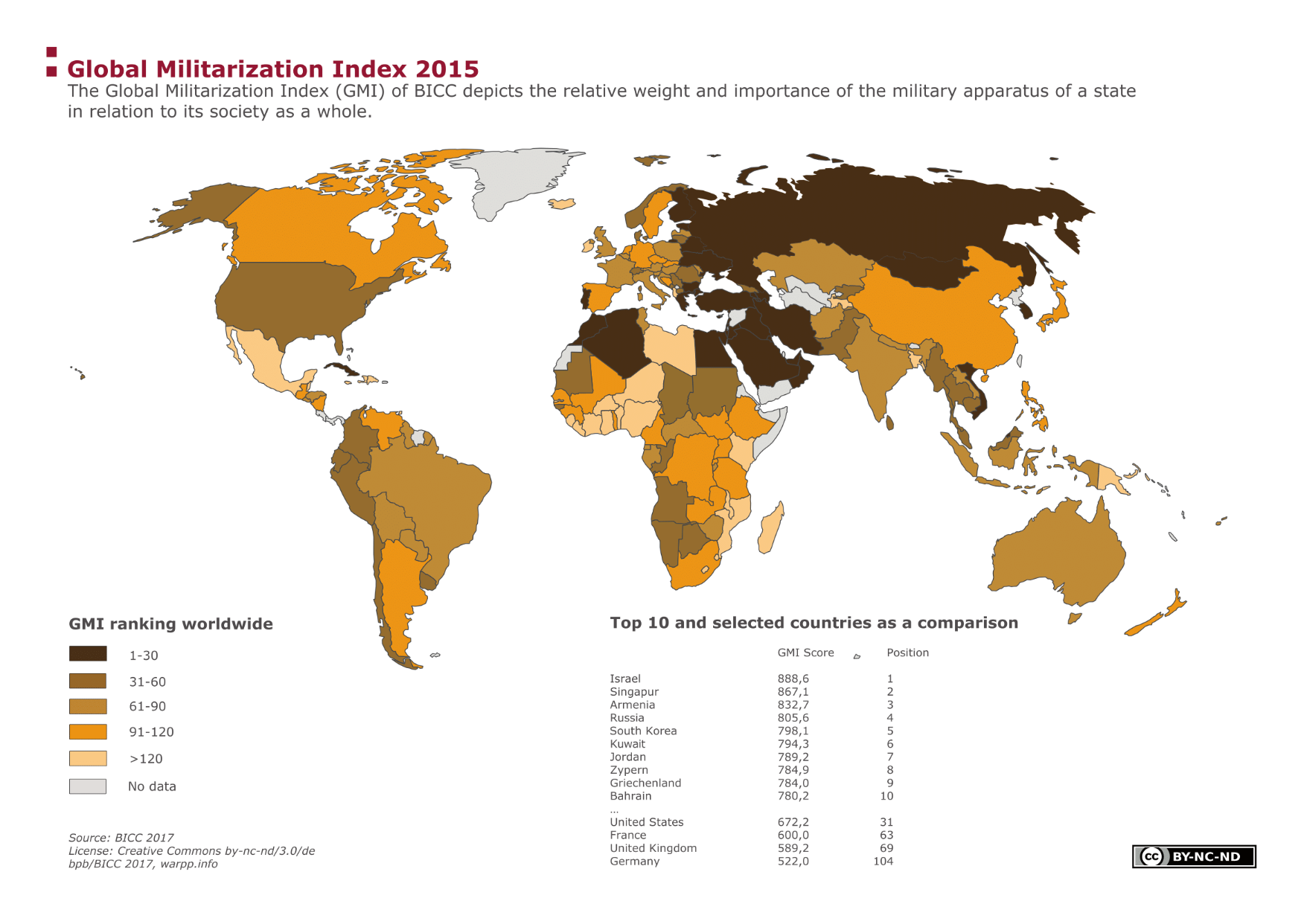Global Militarization Index 2016

The map of the world shows the level of militarization of a country in 2016 based on the BICC Global Militarization Index (GMI). The darker the colour of a country, the higher its militarization. For countries coloured in grey, no data were available for 2015. The table below the map shows the ten highest militarized countries worldwide. The GMI score is calculated from the categories military expenditures, military personnel and heavy weapons via a statistical method; the score indicates a country's militarization from 0 to 1000. For comparison, the table shows the GMI for the United States, France, the United Kingdom and Germany.
Facts
The map shows that the region of the Middle East is one of the most militarized regions worldwide. The most militarized country in the world is Israel (GMI score 888.6) also part of the region. Apart from that, countries of the former Soviet Union, such as Russia or Ukraine, also show a high level of militarization. There is, however, one Asian country, namely Singapore (GMI score of 867.1) on position 2 of the top 10 most militarized countries. Countries with a high level of militarization allocate more resources, i.e. funds, training opportunities and personnel to the military compared to other areas of society. In other words, the relative weight and significance of the military apparatus of these states in relation to its society as a whole are particularly high.
Compared to the most militarized countries, the significance of the military in the United States, France, the United Kingdom and Germany (in descending order) is relatively small. This is why they feature at lower positions in the Militarization Index. Even though these four NATO countries are often named in connection with arms exports and conflicts, they allocate a much larger share of resources and thus significance to other areas of society than the top 10 most militarized countries.
Terms, notes on methodology or reading aids
Militarization is understood here as the ratio between state resource distribution to the military sector and other areas of society. This definition was coined by BICC, the Bonn International Center for Conversion. With the help of various indicators, BICC compiles the Global Militarization Index (GMI) to be able to compare the level of militarization of various countries. It, for instance, compares government expenditures measured against the gross domestic product (GDP) for the military with those for health expenditures. The three main categories that the GMI is derived from on are military expenditures, military personnel and heavy weapons in a country. The result from the different indicators is a value between 0 and 1000—the higher the value, the higher the militarization of a country.
Data sources
BICC (Bonn International Center for Conversion) BICC (Bonn International Center for Conversion) was founded in 1994 as an independent, not for profit organization. Besides providing advisory services and research on the use of military installations for civilian purposes (conversion), BICC also deals with a wide range of global topics in the field of peace and conflict research, such as migration, arms control and natural resources The data collected for the GMI reach back to the year 1990.
The Global Militarization Index
BICC 09/2016





